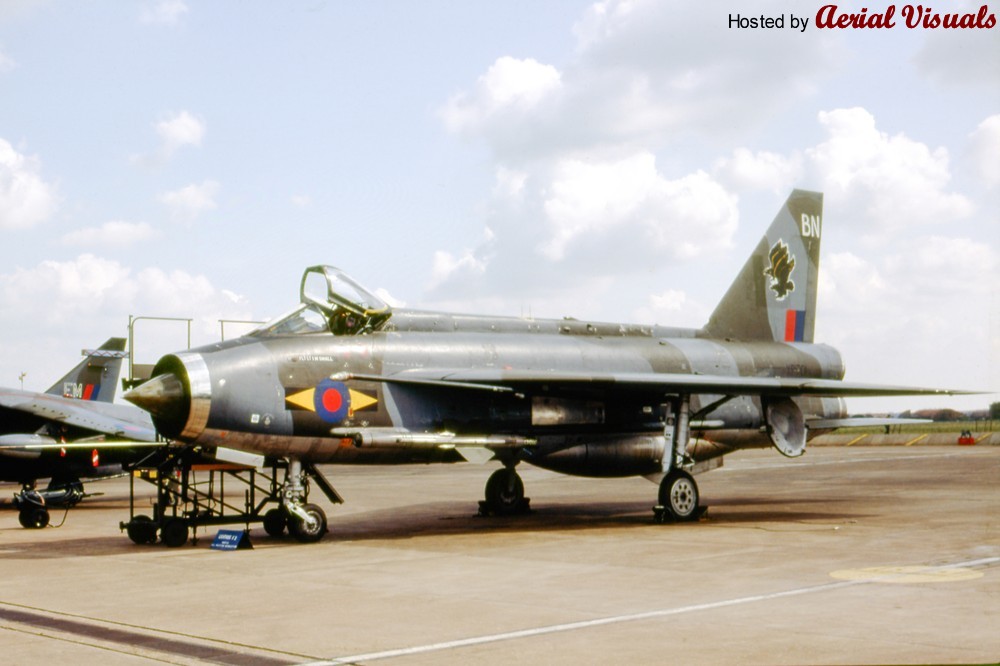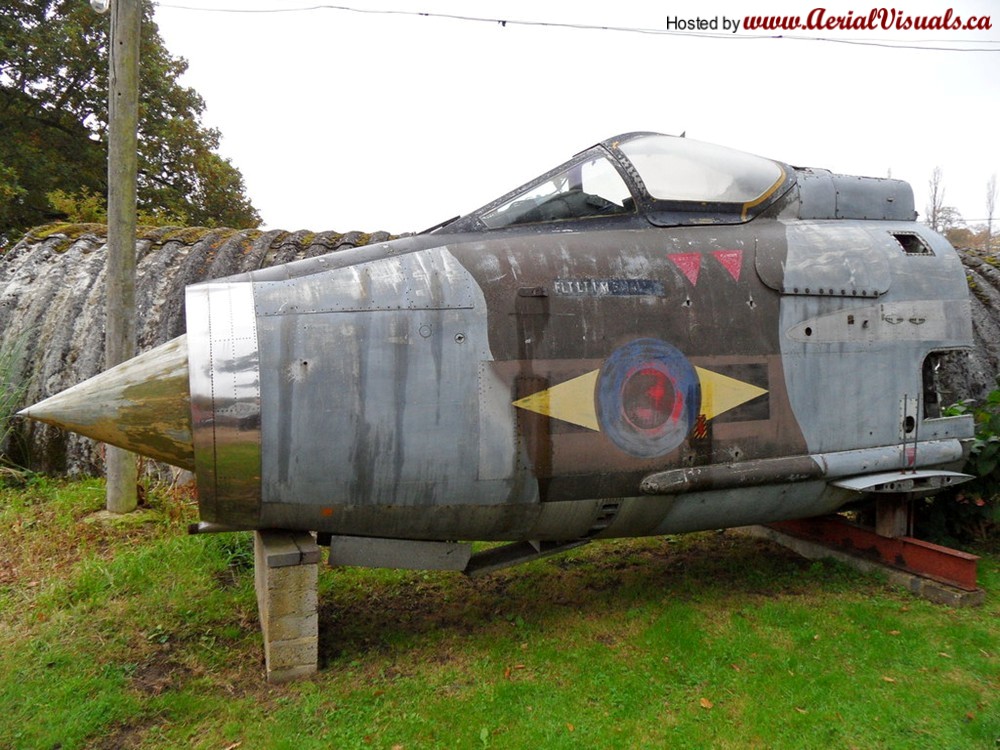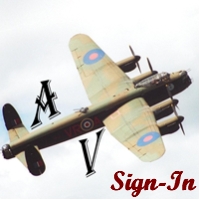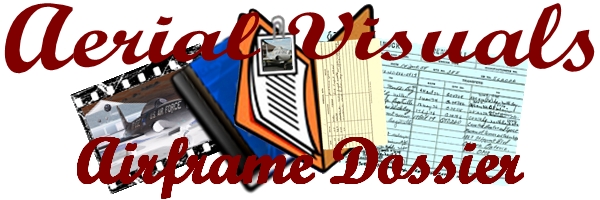|
|
Dates |
|
Event |
|
|
Constructed as a Lightning F.3.
Was the ninth F. 3 built. |
14 September 1963 |
|
First flight.
Flown at Samlesbury by T.M.S Ferguson being the ninth F.3 built. |
From September 1963 to July 1964 |
|
To BAC, Warton. |
5 May 1964 |
|
Used for assessment of production flight control computer type C. |
6 May 1964 |
|
Taken on Strength/Charge with the Royal Air Force with s/n XP701.
XP701 handed over to RAF with 4:19 hours on the airframe. Used for OR946 trials but stayed at Salmesbury with BAC and the A and AEE. |
|
|
Was used to test modification 4051 which was used to stop undercarriage hang ups on the ground and in the air. She was also used to trial the auto flight control system and engine and airframe ice-detection systems and auto anti-icing equipment. This included intake lip anti-icing trials. |
11 May 1964 |
|
Special occurrence report. |
23 June 1964 |
|
Transferred to Aamp; AEE, Boscombe Down.
Sent to Boscombe Down for assessment of the type C flight control computer. |
1 July 1964 |
|
Despatched to Boscombe Down with 13:21 hours for flight control system trials. |
From 1 July 1964 to January 1966 |
|
Transferred to BAC amp; Aamp; AEE, Boscombe Down. |
10 July 1964 |
|
Special occurrence report. |
16 July 1964 |
|
Special occurrence report. |
29 July 1964 |
|
Transferred to Warton.
Despatched to Warton with 25:45 hours. |
30 July 1964 |
|
Trials of variable gearing, height lock and PEC in ADS Mk2 against C4. |
From January 1966 to 17 June 1966 |
|
Transferred to Aand AEE, Boscombe Down. |
14 January 1966 |
|
Clearance of OR946 Mk 1 cockpit instrumentation with variable gearing height lock made for CA release in F3 aircraft by A and AEE. |
18 January 1966 |
|
Arrived at Boscombe Down with 71:50 hours. |
From 17 June 1966 to 6 September 1967 |
|
Used by BAC for development flying with instrumented under carriage jacks and radius rods prior to introduction of mod 4052 (strengthening of radius rod mounting bracket). --. |
|
|
Transferred to Warton.
Laid up at Warton after flight 177 with 96:42 hours. This airframe had a long history of intake vibration eventually attributed to loose ballast in the nose section. |
7 September 1967 |
|
After four years as a guinea pig XP701 was refurbished and delivered to 29 Squadron with 102:09 hours. |
28 December 1967 |
|
Flown by Flt. Lt. Gross on exercise Ricochet. |
April 1968 |
|
Alan WithingtonCOs first flight in XP701. |
18 May 1968 |
|
Displayed at Wattisham open day. |
25 March 1969 |
|
Russell Morley COs first flight in XP701, his second radar convex sortie, S1Bs which were 180s using loose control. |
9 February 1970 |
|
XP701 (flown by Alan Withington) was one of five Lightnings which flew non-stop to Akrotiri in Cyprus being re-fuelled in-flight six times, taking four hours and 20 minutes. The aircraft were not camouflaged at this time, being left in their natural metal finish but with a section of their spines painted white to minimise overheating of the AVPIN starter fuel tank. |
28 July 1970 |
|
Russell Morley flew XP701 to RDAF Skrydstrup for a NATO exchange. |
September 1970 |
|
Transferred to 111 Squadron, Wattisham. |
1 October 1970 |
|
Russell MorleyCOs last trip in XP701 acting as a high flying target at night - a whole 35 minutes worth! |
20 October 1970 |
|
Alan WithingtonCOs final flight in a Lightning. XP701 suffered Hyd 1 failure, which meant that the braking parachute was unlikely to deploy, and his last experience in the aircraft was a precautionary landing, clearing the runway, and shutting down the engines on the ORP. And then being towed back to the dispersal. |
2 November 1970 |
|
When 29 SquadronCOs Lightnings were replaced with Phantoms, XP701 was transferred to 111 with 1013:35 hours. |
December 1970 |
|
First flight.
First flown by Stewart Gosling marked M of 111(F) in natural metal finish. |
2 June 1971 |
|
Flown by Ken Edmond from Wattisham to Akrotiri for Panther Trail 41. |
December 1971 |
|
Flown by Martin Bee several times from the 8th to the 15th whilst with 111 Squadron at Wattisham. |
24 February 1972 |
|
To 29 Squadron at Wattisham with 1332:45 hours. |
6 March 1972 |
|
John BaggintonCOs first flight in XP701 - Exercise Prophet. |
16 March 1972 |
|
Air-to-air re-fuelling sortie by John Bagginton. |
1 May 1972 |
|
Air defence procedure training flight by Roger McGowan. |
30 May 1972 |
|
General handling trip by John Bagginton. |
June 1972 |
|
Flown by John Bagginton in a Queens birthday flypast with a Vulcan. |
From 1972 to 24 May 1973 |
|
Transferred to 60MU Leconfield. |
December 1972 |
|
Involved in an incident.
No. 2 engine bay fire during floor re-sealing trials. |
12 June 1973 |
|
Squadron detachment to Aalborg in Denmark, close formation by Roger McGowan with Taff Butcher and Bob Ruscal. |
27 June 1973 |
|
Two-v-two combat against Dutch F-104s on a visit to Wattisham flown by by Roger McGowan. |
1973 |
|
One-v-one combat training by by Roger McGowan against Jake Jarron. |
23 October 1973 |
|
Exercise Blackmail by Roger McGowan. |
7 November 1973 |
|
Subsonic practise intercepts by Roger McGowan with Bob Ruscal as target, took off without ventral tank. |
18 December 1973 |
|
Roger McGowans last flight in XP701 with a standoff simulated air-launched cruise missile attack. |
13 February 1974 |
|
Flown by John Hawtin from Wattisham leading a sortie in which XR715 flown by Terry Butcher (who ejected safely) crashed at Blyford Green Suffolk. |
From September 1974 to October 1974 |
|
John Bagginton rejoined 29 Squadron. Continued as F 29 Sqdn, Wattisham. |
7 November 1974 |
|
Rod Thomas first flight in XP701. He flew an Air to Air refuelling mission followed by medium level intercepts and visual identification practice. This would be flown on instruments down to a minimum range of 300 yds before looking up to ident the target. This flight was 1 hour 55 mins and finished with a radar approach into Wattisham. |
19 November 1974 |
|
John Baggintons last flight in XP701. |
27 November 1974 |
|
Rod Thomas second flight in XP701: intercepts and idents on a Canberra target aircraft (time 40 mins). |
28 November 1974 |
|
Rod Thomas last flight in XP701: intercepts on a Lightning target, (time 40 mins). |
1 January 1975 |
|
Assigned to Wattisham for storage. |
20 March 1975 |
|
Transferred to 56 Squadron.
Operated with markings: W |
21 March 1975 |
|
Assigned to Wattisham for storage. |
17 April 1975 |
|
Transferred to 56 Squadron.
Operated with markings: W |
11 May 1976 |
|
Involved in an incident.
Brake problem - from pilot Steve Riley: The incident took place just a few weeks before we disbanded as a Lightning squadron. On the first squeeze of the brake handle, there was a snap and the handle lost all resistance. I tried to yank on the cable below the stick top but to no avail. At about 80kts 701 drifted gently off the right side runway 23, missing the runway edge lighting. I braced myself expecting the right wheel to dig into soft ground but of course the ground was rock hard (dry summer of 76!) and there was no damage. |
11 May 1976 |
|
Later that day: Photographed at Wattisham in a hanger surrounded by servicing equipment and fitted with two firestreak infra-red missiles. The markings were red and white squares with a thin pale blue outline flanking the roundel with 56s red and yellow firebird motif on the fin. The white spine panel was still evident. |
21 May 1976 |
|
Flown again by Steve Riley. --. |
8 June 1976 |
|
Steve Rileys last flight in XP701 (from Wattisham). |
1 July 1976 |
|
Assigned to Wattisham for storage. |
17 July 1976 |
|
Ferry flight.
Flown from Wattisham to Binbrook by Murdo Macleod with the T5 XS417 and F6 XR771. |
19 July 1976 |
|
Assigned to ASSF Binbrook for storage. |
29 July 1976 |
|
Evaluated as Cat. 3(R). |
4 August 1976 |
|
Evaluated as Cat. 3 at ADA. |
27 May 1977 |
|
Transferred to ASSF Binbrook. |
10 November 1977 |
|
Refinished in a camouflaged grey/green colour schme. |
7 March 1978 |
|
Transferred to 11 Squadron.
Operated with markings: O |
June 1978 |
|
Flown again by Stewart Gosling. |
5 September 1978 |
|
Transferred to ASSF Binbrook. |
9 June 1980 |
|
Evaluated as Cat. 3 at ADA. The No. 2 air intake was repaired. |
22 August 1980 |
|
Transferred to ASSF Binbrook. |
1 October 1980 |
|
Transferred to 5 Squadron.
Transferred to No. 5 for exercise Mallet Blow. |
From 4 October 1980 to 10 October 1980 |
|
Transferred to 5 Squadron.
Continued loan to No. 5 for aggressor training. |
10 October 1980 |
|
Held as in use reserve. |
11 December 1980 |
|
Painted with dark sea grey and dark green upper surfaces with the undersides remaining in the natural metal finish. The roundels had become smaller and low-visibility with the removal of the white centre circle. The squadron bars were black with a yellow triangle pointing outwards. The fin carried the squadrons pair of black eagles outlined in white with the code letter also in white. |
31 July 1981 |
|
Spotted at Wattisham at the Fighter Meet/Beer Call. |
15 August 1981 |
|
Spotted at RAF Valley by Russ Smith. |
12 October 1981 |
|
Ferry flight.
Flt. Lt. Iain SmallCOs first flight (of 23 in total) in XP701 and his first single seat trip on 11 Sqn. It was a transit bringing the aircraft back to Binbrook from Waddington. His name can still be seen stencilled on the cockpit section at Robertsbridge. Most of his trips in XP701 were Lightning against Lightning air combat training. |
19 October 1981 |
|
Another flight by Flt. Lt. Lain Small. |
21 January 1982 |
|
Involved in an incident.
Flying accident with the ventral tank fin ripped off during take off holing the tank and igniting the fuel. Flames extinguished during climb and landed safely. Evaluated as Cat. 3. |
25 January 1982 |
|
Transferred to MEAS Binbrook. |
2 March 1982 |
|
ADA, evaluated with Cat. 3 damage. |
23 June 1982 |
|
Transferred to 11 Squadron for check 2 and Cat 3 recovery. |
1 July 1982 |
|
Transferred to 11 Squadron, Binbrook. |
9 July 1982 |
|
Repaired.
Cat. 3 repair completed. |
From July 1982 to July 1983 |
|
Transferred to 11 Squadron, Binbrook.
Operated with markings: BN
Returned to service with 11 Squadron. |
20 September 1982 |
|
1v1 against F-5 Aggressor by Flt Lt Iain Small. |
24 September 1982 |
|
2v1 against F-5 Aggressor by Flt. Lt. Iain Small. |
6 October 1982 |
|
Air-to-air refuelling from a Vulcan by Flt. Lt. Iain Small. |
21 October 1982 |
|
ECM training against 360 Sqn Canberra by Flt. Lt. Iain Small. |
27 October 1982 |
|
Spotted at RAF Binbrook by Shaun Connor. |
9 April 1983 |
|
Photographed at RAF Marham by David Ilot and also by Derek Heley. Mk 3s were at the time the main combat aircraft. All the Mk 6s were g-limited to try and extend their life even more. After about 18 months he was allocated XR760 - which is now at the bottom of the North Sea. |
9 April 1983 |
|

Photographer: Robert Nichols
Notes: at RAF Marham Airshow |
20 July 1983 |
|
Involved in an incident.
Engaged the barrier but flying within the hour during Exercise Priory. |
10 August 1983 |
|
1v1v1 Air combat training. |
14 December 1983 |
|
2 v 2 Air Combat training against Coltishall Jaguars. |
16 April 1984 |
|
Flt. Lt. Iain Smalls last XP701 trip (medium level intercepts). |
10 May 1984 |
|
Transferred to 5 Squadron, Binbrook.
Operated with markings: AN |
14 August 1984 |
|
Transferred to Lightning Training Flight (LTF), Binbrook. |
23 October 1984 |
|
Transferred to 5 Squadron, Binbrook.
Operated with markings: AR |
24 October 1984 |
|
Transferred to Lightning Training Flight (LTF), Binbrook. |
25 October 1984 |
|
Transferred to 5 Squadron, Binbrook. |
21 February 1985 |
|
Transferred to MEAS, Binbrook.
Marked as a ground instruction airframe. |
25 February 1985 |
|
Transferred to 5 Squadron, Binbrook. |
30 May 1985 |
|
Transferred to MEAS, Binbrook. |
9 February 1986 |
|
New serial number assigned: 8924M RAF
Withdrawn from use with 2,977:10 hours on the airframe, and put into service as a ground instruction airframe. |
22 January 1987 |
|
Used as a decoy. |
6 July 1987 |
|
The serial number was removed. |
August 1987 |
|
Spotted sheeted in the storage hangar at RAF Binbrook. |
17 August 1987 |
|
Seen in LESF with cartoon-type drawing on port side of fin. September 29th 1987: seen on airfield after spares recovery with makings (but not cartoon) removed. |
9 October 1987 |
|
Seen marked as 8924M. |
21 October 1987 |
|
To Battle of Britain Museum, Kent.
Sold to the museum. |
15 December 1987 |
|
Transported by air.
Airlifted by an American CH-53 Jolly Green Giant Helicopter (diverted to Sculthorpe due to bad weather) after it was first stripped down of all non-essential equipment. |
18 December 1987 |
|
Delivered to Kent Battle of Britain museum, Hawkinge. |
21 December 1987 |
|
Struck off Strength/Charge from the Royal Air Force. |
22 August 1990 |
|
Spotted by Richard Cawsey at the Kent Battle of Britain Museum, Hawkinge being dismantled, with one wing removed and being hoisted by a crane. |
8 September 1990 |
|
Scrapped with nose section going to Mr. Hukins of the Robertsbridge Aviation Museum.
 View the Location Dossier View the Location Dossier |
December 1990 |
|
The majority of the airframe went to Haningfield Metals. |
30 October 2011 |
|

Photographer: David Harvey
Notes: On behalf of the Robertsbridge Aviation Society I have compiled a history (with photos) of XP701: http://goo.gl/S2vGl |
|
 | | This airframe dossier is based on
unreviewed imported data.
If you can verify the documented history or add to it with additional text and/or photos please feel free to do so by using the upload tool and the history editor. |





 View the Location Dossier
View the Location Dossier

